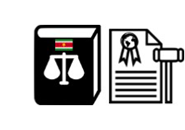How the Safeguard is ADDRESSED
The national forest programme is clearly defined in several PLRs. National actions complement and are consistent with the objectives of these PLRs.
According to the Constitution, the provisions of international human rights agreements, which may be directly binding on anyone, shall become effective upon promulgation, i.e. do not require the amendment or development of national law before they are applicable. Other international agreements (law) shall be ratified and come into effect (national) after approval by the National Assembly. Legal regulations in force in the Republic of Suriname shall not apply if such application should be incompatible with provisions of international agreements which are directly binding on anyone and which were concluded either before or after the enactment of the regulations. This means that national regulations should be in accordance with international agreements/laws.
The government is making an effort to implement the rulings of the Inter-American Court of Human Rights. For example, a draft Law Collective Rights ITPs 2019, addressing several key points from the IACHR rulings, is currently being considered for approval.
Please see the PLR analysis for further detail.
PLRs
- Constitution of Suriname
- Forest Management Law 1992
- National Forest Policy 2003-2015 (NFP) (1)
- Interim Strategic Action Plan for the Forest Sector (2009-2013)
- The National Development Plan 2017-2021
(1) This has not been updated as it is still considered valid.


